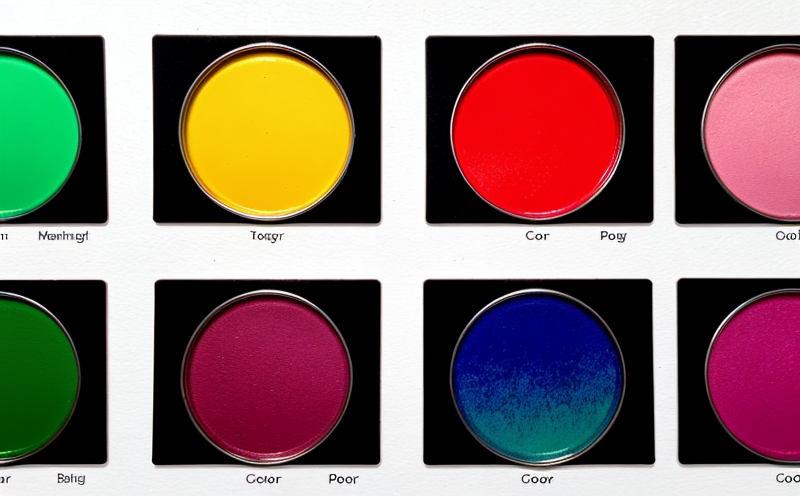EN 62471 Spectrum Testing for Photobiological Safety of Lighting Systems
The European Standard EN 62471:2018, titled "Photobiological safety of lamps and lamp systems," has become a cornerstone in ensuring the photobiological safety of lighting systems. This standard aims to protect human health by establishing requirements for the spectral power distribution (SPD) of light sources, which can influence skin and eye irritation, cancer risk, and other adverse effects.
The testing under EN 62471 is particularly critical for manufacturers of LED lights, fluorescent lamps, high-intensity discharge lamps (HID), and other modern lighting technologies. The standard evaluates the photobiological safety by measuring the spectral power distribution across a range that includes ultraviolet (UV) light, visible light, and near-infrared (NIR) light.
The testing process involves several key steps:
- Sample Preparation: Samples are prepared in accordance with the standard's requirements to ensure accurate measurements. This may include ensuring that the sample is representative of the actual product being tested.
- Spectrophotometer Use: A spectrophotometer, specifically calibrated according to EN 62471-1:2018, measures the spectral power distribution (SPD) of the light source. This instrument is capable of detecting wavelengths from UV to NIR.
- Data Analysis: The collected data are analyzed using statistical methods, and compliance with the standard's photobiological safety limits is determined.
- Reporting: Results are compiled into a detailed report that includes the spectral power distribution (SPD), the specific wavelengths where non-compliance occurs, if any, along with recommendations for mitigation.
The primary goal of EN 62471 is to ensure that lighting systems do not emit harmful levels of UV and blue light, which can lead to retinal damage. The standard also considers the effects on skin, especially in relation to melanoma risk. Compliance with this standard is mandatory for products intended for sale within the European Economic Area (EEA).
Understanding the photobiological safety limits set by EN 62471 requires a detailed knowledge of the spectral power distribution and its impact on health. For instance, blue light has been shown to cause retinal damage at certain wavelengths, while UV exposure can lead to skin cancer. The standard helps manufacturers design products that are safe for both indoor and outdoor use.
The importance of this testing cannot be overstated, especially given the increasing prevalence of LEDs in consumer electronics and the need for sustainable lighting solutions. By adhering to EN 62471, manufacturers can ensure that their products meet the highest safety standards and avoid potential legal issues.
In conclusion, EN 62471 spectrum testing is an essential step in ensuring the photobiological safety of lighting systems. It provides a comprehensive framework for evaluating the spectral power distribution of light sources to prevent adverse health effects. This standard is critical for manufacturers aiming to produce safe and compliant products that meet both regulatory requirements and consumer expectations.
Benefits
- Innovation Facilitation: Ensures compliance with international standards, paving the way for product innovation without compromising safety.
- Market Access: Enables manufacturers to easily enter markets within the European Economic Area by meeting mandatory regulatory requirements.
- Consumer Trust: Builds trust among consumers who can be confident that their products comply with stringent health and safety regulations.
- Risk Mitigation: Identifies potential risks early in the design process, allowing for modifications to avoid non-compliance issues.
By adhering to EN 62471, manufacturers not only enhance their product safety but also ensure long-term market sustainability and customer satisfaction. This testing process is a vital component of any comprehensive quality assurance program, ensuring that lighting systems are safe for use by the general public.
Eurolab Advantages
EuroLab, as a leading independent laboratory, offers several advantages when it comes to EN 62471 spectrum testing:
- Expertise and Experience: Our team of highly qualified engineers has extensive experience in photobiological safety testing.
- State-of-the-Art Facilities: We are equipped with the latest spectrophotometers, ensuring accurate and reliable measurements.
- Comprehensive Reporting: Our detailed reports provide a comprehensive overview of the test results, including recommendations for any necessary modifications to achieve compliance.
- Fast Turnaround Time: We offer swift testing services without compromising on quality, which helps our clients stay ahead in the market.
Choosing EuroLab means leveraging our deep expertise and cutting-edge facilities to ensure that your products meet the highest safety standards. Our commitment to excellence is reflected in every aspect of our service, from sample preparation to final report delivery.
Customer Impact and Satisfaction
The impact of EN 62471 spectrum testing on customers is profound. By ensuring that lighting systems comply with this standard, manufacturers can enhance the overall safety and reliability of their products. This not only protects consumers but also strengthens brand reputation.
- Enhanced Brand Reputation: Compliance with international standards such as EN 62471 enhances a company's reputation in the market, making it more appealing to both customers and investors.
- Increased Consumer Confidence: Knowing that their products meet stringent safety regulations can significantly increase consumer confidence and trust.
- Reduced Legal Risks: Non-compliance with EN 62471 can lead to costly legal actions. By adhering to this standard, manufacturers mitigate these risks.
- Increased Market Penetration: Compliance opens up opportunities for market expansion into regions that require adherence to international standards.
In summary, EN 62471 spectrum testing is a cornerstone of product safety and compliance. It ensures that lighting systems are safe for use by the general public while providing numerous benefits to manufacturers and consumers alike.





